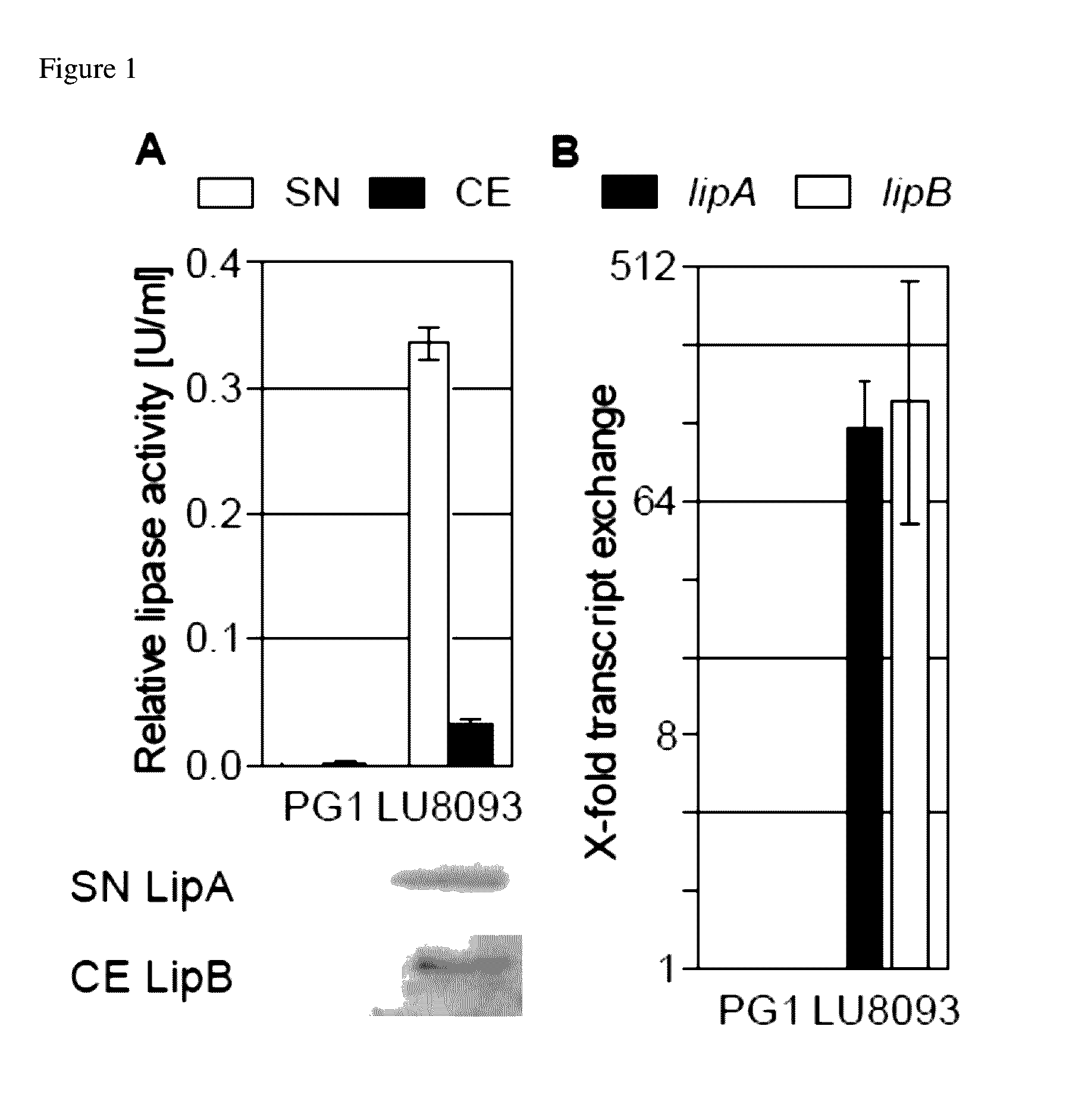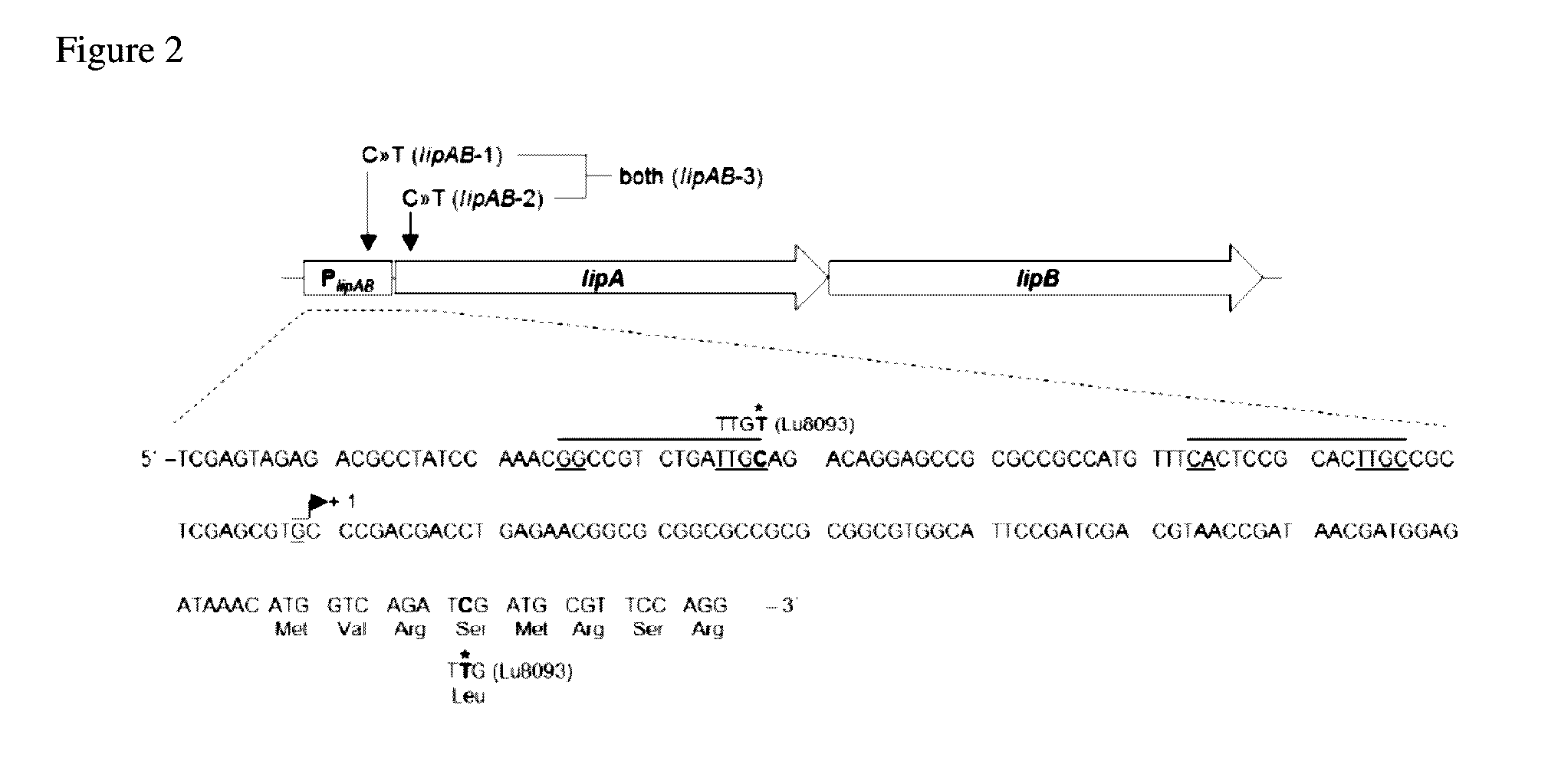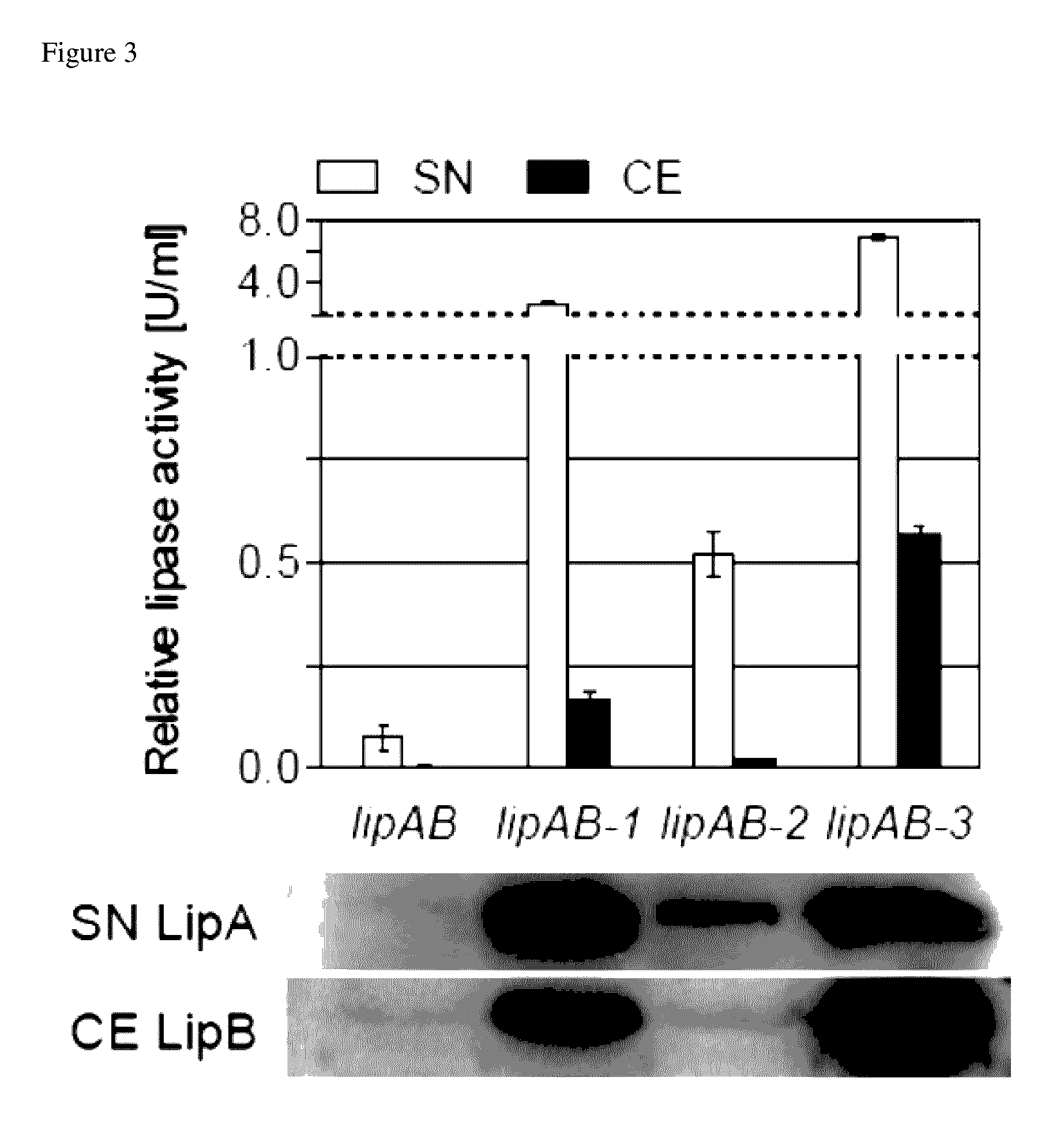Nucleic acid molecules for increased protein production
a nucleic acid molecule and protein technology, applied in the field of biotechnology, can solve the problems of not efficiently secreted, affecting the production of protein, and requiring optimization of expression strains, so as to increase lipase production and secretion, and increase lipase production. the effect of significant increas
- Summary
- Abstract
- Description
- Claims
- Application Information
AI Technical Summary
Benefits of technology
Problems solved by technology
Method used
Image
Examples
examples
[0090]Material and methods
[0091]Bacterial strains and growth conditions. E. coli strains DH5α and S17-1 were cultivated in LB medium (Carl Roth, Karlsruhe, Germany) at 37° C. B. glumae LU8093, B. glumae PG1 wild-type (Frenken et al. (1992) Appl. Environ. Microb. 58: 3787-3791.) and the lipAB deficient derivative B. glumae PG1ΔlipAB (Knorr J. 2010. Physiologie eines industriellen Produktionsstammes: Proteinsekretion, Regulation and Produktion von 653 Biotensiden in Burkholderia glumae. Ph.D. thesis. Heinrich-Heine-University Duesseldorf, Duesseldorf, Germany) were cultivated in LB medium at 30° C. For analysis of lipase activities and transcript-level determination, B. glumae strains were cultivated for 14 h at 150 rpm. Standard cloning experiments were performed in E. coli DH5α. Plasmids were stabilized by using appropriate concentrations of chloramphenicol (50 μg / ml for E. coli and 200 μg / ml for B. glumae). The expression of the lipAB operon from plasmid pBBR-lipAB harboring its na...
PUM
| Property | Measurement | Unit |
|---|---|---|
| concentrations | aaaaa | aaaaa |
| concentrations | aaaaa | aaaaa |
| pH | aaaaa | aaaaa |
Abstract
Description
Claims
Application Information
 Login to View More
Login to View More - R&D
- Intellectual Property
- Life Sciences
- Materials
- Tech Scout
- Unparalleled Data Quality
- Higher Quality Content
- 60% Fewer Hallucinations
Browse by: Latest US Patents, China's latest patents, Technical Efficacy Thesaurus, Application Domain, Technology Topic, Popular Technical Reports.
© 2025 PatSnap. All rights reserved.Legal|Privacy policy|Modern Slavery Act Transparency Statement|Sitemap|About US| Contact US: help@patsnap.com



